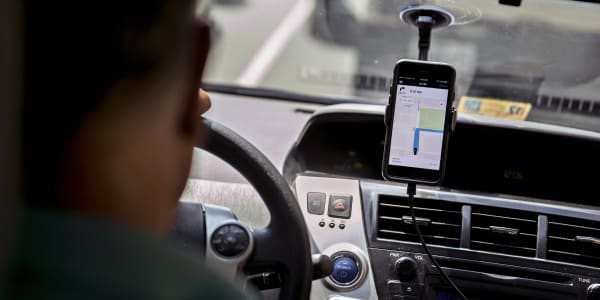
Google's self-driving cars hit Silicon Valley streets. A Volvo autonomous vehicle made it to roads in downtown Atlanta. General Motors, and reportedly Apple are in on the autonomous car development trend. Cars that can operate on their own are already around, but they're far from perfect.
Consumers' lack of trust in these vehicles could keep them from becoming commonplace, said IHS Automotive senior analyst Jeremy Carlson. His firm expects low autonomous car sales volumes through the next decade.
Google's current self-driving cars have been in accidents caused by cars driven by humans. With 25 prototypes on public streets as oflast month, it's continuously trying to improve safety.
Earlier this year, a Tesla Model S computer system was taken overby hackers who .Though that car isn't entirely autonomous, the incident sparkedserious safety concerns.
"A bad experience or misused technology has the potential to set public acceptance back in a significant way, which is part of the reason that the mainstream automotive industry is moving forward cautiously with new automated and autonomous driving systems," Carlson said.
But in academia, an autonomous car project at Stanford University seems far from cautious, at least on the surface. Stanford's Marty autonomous 1981 DeLorean can abruptly apply brakes and swiftly cut engine power, according to the university.
Results from speed and accuracy testing could be used to develop features to make autonomous cars safer, according to Chris Gerdes, a Stanford University professor of mechanical engineering.
"I think that these technologies, the sort of insight that we get from driving at the limits really can get out into safety systems in the nearer term. But since this is a research project, we expect that you'll probably not see the impact of this out on the road for a least another five to seven years," Gerdes told CNBC.
Google has said that self-driving cars could be available to consumers as early as 2020, as CNBC has reported. IHS expects that by 2035, about 1 in 10 cars will be autonomous.
For now, regulators say autonomous car technology isn't quite ready for the mainstream.
"While the [National Highway Traffic Safety Administration] does not believe that self-driving vehicles are currently ready to be driven on public roads for purposes other than testing, the agency would like to emphasize that it is encouraged by innovations in automated driving and their potential to transform our roadways," according to a report by the regulatory body. It said autonomous vehicles accelerating and braking with the flow of traffic could conserve fuel and reduce vehicle crashes.
"I'm not sure when the time frame is, but I think ultimately driving is going to transition from something that we have to do to live, to a more recreational activity," Gerdes said.







